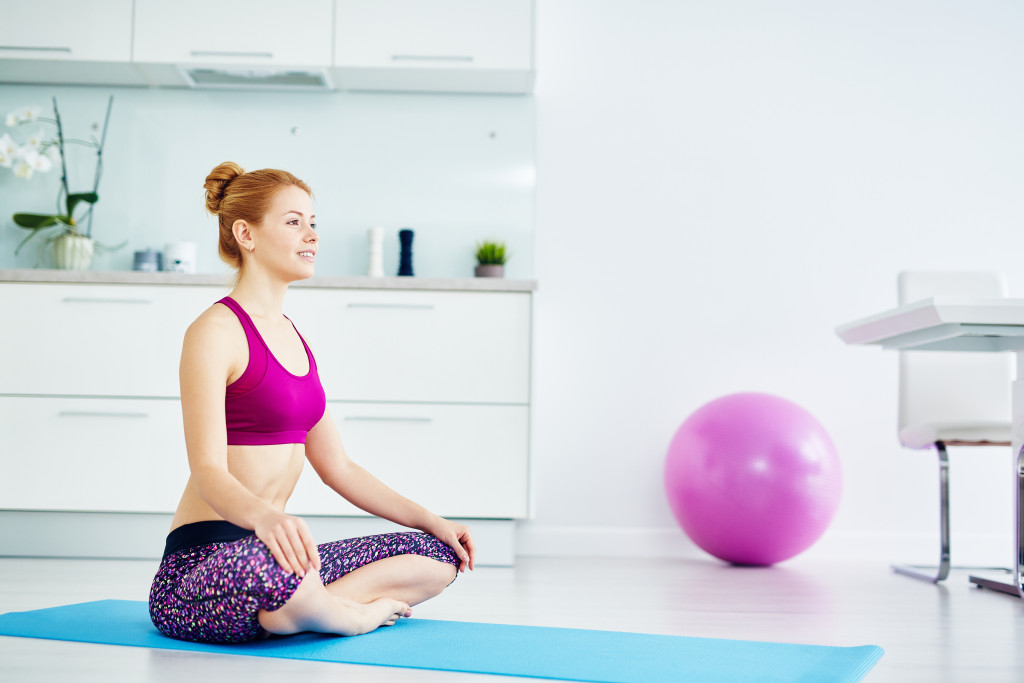As more Americans are staying home (at the peak of the pandemic in March and April, 9 in 10 Americans sheltered in place), many are going sedentary. With not much else to do at home but watch Netflix or browse the internet, Americans are gaining weight.
Aside from doing less physical activity as we try to avoid going outside, we’ve also been snacking more. A OnePoll survey found that 69% of all respondents said they snacked out of boredom.
These days, more than ever, we need to be more conscious of our health, which includes watching our weight. With gyms closed and many trying to stay indoors as much as possible, what is there to do?
Fortunately, getting fit doesn’t require a lot of equipment (never mind what all those fitness equipment ads tell you). Some body exercises to build your strength and cardio should be enough to burn those excess calories.
How to Work out at Home
The following are easy to do exercises. Easy in the sense that you don’t need any equipment, although they can be challenging to do if you’re not accustomed to working these muscles.
The key to getting fit and shedding those excess pounds lies in aerobic exercise. These are exercises that increase your heart rate and activate large muscle groups. To have a longer workout and to train yourself to do more and more, follow up your cardio exercise with a “resting” exercise. These will let you catch your breath a bit while still being part of a workout.
Exercises to Do at Home

For best results, do 30 seconds of each, restfor about a minute, then do the whole thing over again. Feel free to change up the order, keeping in mind the pacing and alternating cardio and rest exercises.
- Squats. Work those glutes! The key to a well-shaped bottom is in doing this at high reps. Get as the backs of your thighs as close to parallel as you can to the ground. And Keep your chest out and forward—hunching over can stress your spine and cause back problems in the long term.
- Push-ups. This strengthens your upper body. Beginners should stick to a wide-stance push-up: tuck your elbows in as much as you can and dip as low as you can without touching the floor. Keep your hands at just a little wider than shoulder-width. If you spread out too much, you’re putting pressure on your rotator cuff and shoulder muscles. If you need help, consult any shoulder pain treatment specialist.
- Wall Sit (Resting). For this, you’ll need a patch of wall to lean against. With your back flat against the wall, lower your upper body until your thighs are parallel to the ground. Observers might think it looks easy enough, but you’ll quickly feel the burn on your legs!
- Lunges. These will work your hips, glutes, core, and thighs while also stretching your hamstrings.When done correctly, it will strengthen your legs while also improving your flexibility.
- Jumping Jacks (High Cardio)
- Planks (Resting). Another one that looks easy but is hard to do. This will work your core muscles, and if you mix it up with side planks, it will engage your abs and help build up a muscle called the quadratus lumborum, which helps to prevent back pain.
- Step-ups (High Cardio). Use a low step, like a stair, or a low stool propped against a stair for stability. You can set a pace that will work for you. It’s an effective way to get your heart pumping.
So get started! Your goal is to be able to do your workout in circuits. There are a lot of resources out there on how to do circuit training, so you can change it up when you get bored with your routine.
We don’t know how long this pandemic will last, but until things are back to normal, and we’re back to our old routines, we’ll have to develop some new habits. And as the recent months have shown how important it is to keep healthy, the next habit we should be prioritizing is getting enough exercise at home.

